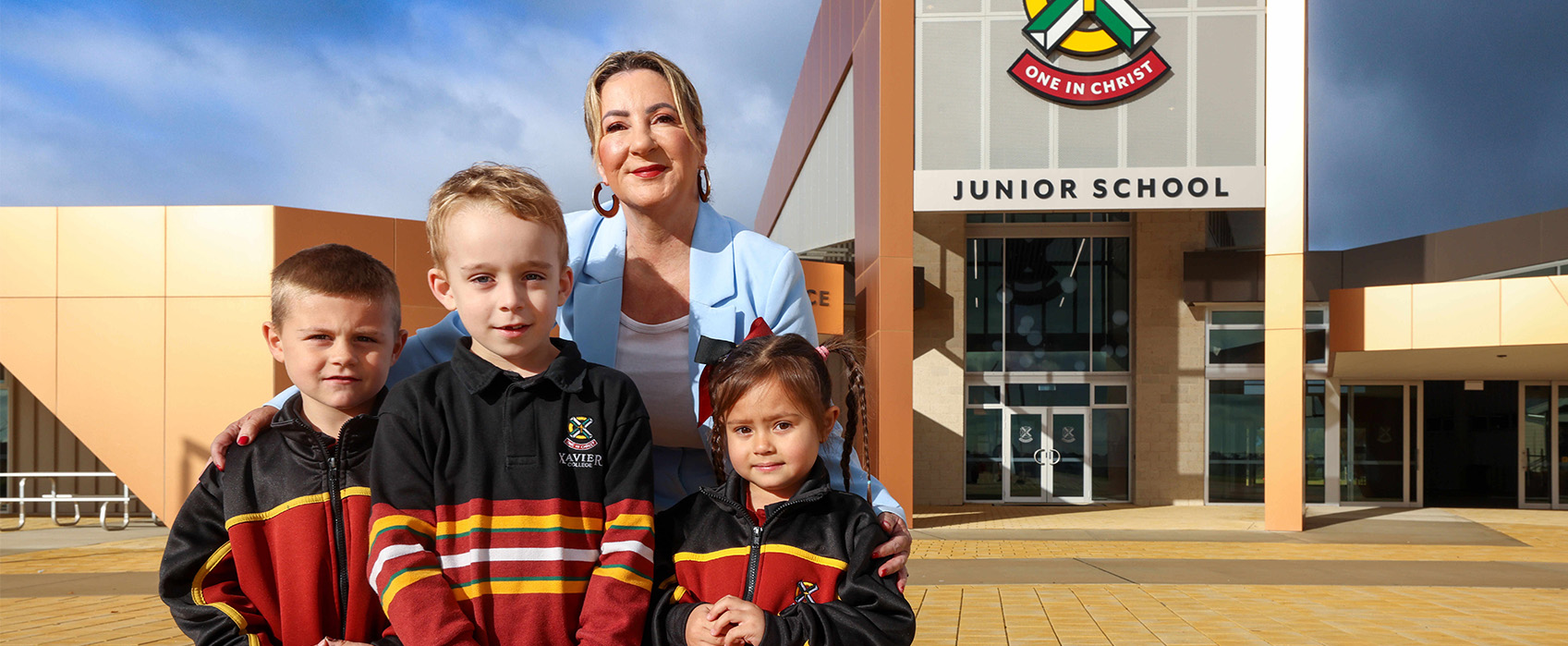
EVERYONE’S WELCOME AT A CATHOLIC SCHOOL.
Discover your local
Catholic school during
Catholic Schools
Open Week
August 4-10



Discover your local
Catholic school during
Catholic Schools
Open Week
August 4-10




Students from Catholic schools across South Australia achieved outstanding SACE results in 2022.
More than 3000 students obtained their SACE, recording a 99.9 per cent completion rate. Thirty-five per cent of grades were in the A band, with 346 merit certificates awarded to 281 students and 10 students receiving the Governor of South Australia Commendation – Excellence Award for their outstanding SACE results.
While this excellence in education is to be lauded, for Catholic Education South Australia (CESA) executive director Dr Neil McGoran the success extends beyond academic results. “It’s about the development of the whole person – you as a learner, as a thinker, as a creative person, and as a person of faith who is heart-filled and compassionate.
“Good subjects and good curricula should do all of those things at once so, while you’re learning, you’re thinking ethically and morally about what you might be able to offer your community in the future.”
Part of this focus is a commitment to regularly identifying and monitoring the learning needs of each individual child. To this end, CESA embodies Clarity, a Professional Learning Suite based on collaborative education created by world-renowned researcher Lyn Sharratt which places 14 parameters at the heart of education.
“The first parameter is, every student can learn,” Dr McGoran says. “It sounds simple but it is your starting point in a Catholic education – how you see a young person as someone who is made in the image of God and can learn, develop, grow and thrive. If you see a young person in that way, you can teach that young person.”
Another parameter focuses on supporting students failing to progress with their learning. “If you put a teaching program in place but realise it’s not having an impact, then collectively we work with each teacher and each student to work out how we might change that,” Dr McGoran says.
“That can take you to different teaching styles but also can include additional support being provided, such as allied health, that is necessary sometimes to help young people feel well about themselves in order to learn most effectively.”
Using a data wall can help educators monitor the progress of each individual student and pinpoint potential issues as soon as they arise. “I like to see it as how we operate most of the time in families. We have our own children and you can see if they’re on track, but you can sense sometimes when they’re not. The sooner you see it, the sooner you can have a conversation about what might be happening and what we need to do to make this different.
“The way we operate in families is so beautiful, so connected to people and it’s so much out of love. If you take it in a school setting and apply it to every student, ultimately, the beneficiaries are the young people.” Investing in those doing the teaching is also a key priority. “When you look at high-performing schools, you notice some patterns,” Dr McGoran says.
“They almost always have a principal who is a clear, instructional leader, who understands learning, understands the curriculum and can drive and negotiate with teachers and bring out the best in them.
“Then you have teachers who fundamentally believe in young people and are committed to their own professional development as educators in Catholic schools. They understand the role of Catholic education as an expression of the church’s mission. And you have schools that have strong connections with other schools because they realise to learn from each other generates improvement. All of those things come together in a way that makes a difference to young people.”

Investment in Catholic schools in Adelaide’s northern suburbs is supporting the growth of new communities.